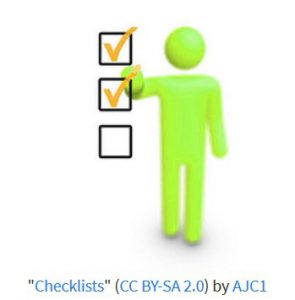As the start of the academic year is just around the corner we’ve pulled together some quick reminders and quick wins for you to consider when creating accessible resources, information and/or learning material.

How do you make sure your Word documents are accessible?
- I use inbuilt heading styles (Heading 1, Heading 2 etc.) to structure my documents to make sure that they are easily navigated with assistive technology.
- I ensure all important images have meaningful text descriptions.
- I ensure every hyperlink on a document has unique meaningful text (i.e. not “Click here” or “More”).
- I have checked the language level to and know that is it readable.
How can you make sure your PowerPoint slides are accessible?
- I use the built-in layout templates.
- I use the Notes Field to explain what the slide shows.
- I use hyperlinks to add additional information.
- I ensure hyperlinks have unique meaningful text (i.e. not “Click here” or “More”).
How do you make sure your multimedia resources are accessible?
- I create subtitles / captions for video and audio resources, or at the very least I ensure that a text based equivalent is available.
- I make sure that my images contain alternative text information.
Alternative formats -text-to-speech
- I can create audio/MP3 versions of my text information.
- I can show learners how to create MP3s of my information.
- I can show learners how to activate the text to speech quick access toolbar on Word documents and in Adobe Reader.
Assessment
- Do you provide online quizzes so that learners can test their progress?
- Do your quizzes allow you to provide rich formative feedback (not just Yes/No or Right/Wrong)?
- Do your quizzes allow the use of media other than text (e.g. images, video audio)?
- Do you know if the tools you use have been tested for accessibility?
Assignments
Do you provide multiple ways to ask learners to demonstrate their knowledge?
- By writing.
- By drawing / graphing / mapping.
- By solving problems.
- By practical skills in a practical context.
- By creating artefacts (e.g. models, videos, design plans).
- By talking about things.
